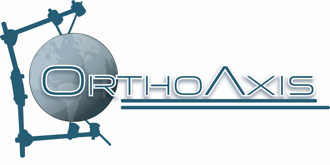Product Overview
The TAYLOR SPATIAL FRAMEâ—Š is an external device for limb correction, lengthening and/or straightening . This external fixator takes advantage of the body's natural ability to grow healthy new bone tissue and gives the surgeon the ability to accurately move bones to their correct precise anatomic alignment.
The TAYLOR SPATIAL FRAME fits around the limb and is attached to the bone with pins or wires that extend from the rings, through the skin and bone to the other side.
The TAYLOR SPATIAL FRAME is a circular, metal frame with two rings that connect with six telescopic struts that can be independently lengthened or shortened relative to the rest of the frame. This allows for six different axes of movement, which gives the TAYLOR SPATIAL FRAME the ability to correct even the most difficult congenital deformities and trauma cases.
There are many different medical conditions where use of the TAYLOR SPATIAL FRAME is prescribed. The external fixator can be used to correct arm and leg length discrepancies and deformities including:
• Injury and trauma including growth plate fractures, malunion , non-union, shortening and deformity due to bone loss.
• Congenital limb length discrepancies. These conditions are associated with many birth defects and deformities including a short femur, otherwise known as fibular hemimelia.
• Pseudoarthritis in which the bone fails to fuse together such as in a fracture healing site. And hemiatrophy, where the bones of one side of a child's body may grow smaller than the other side.
• Short stature including Achondroplasia and other skeletal dysplasias and constitutional short stature.
• External fixators are effective in treating limb length discrepancies linked to dwarfism. Treatment may be appropriate in some cases in order to allow the patient to function more independently.
• Infection involving the bone (osteomyelitis) and joint (septic or infectious arthritis). Treatment of bone infection often requires removal of bone segments which may result in angular deformities and limb length discrepancies.
• Developmental causes which are related to the slowing of growth and limb deformities caused by illnesses such as Blount's Disease, which typically affects the bone development of overweight toddlers and adolescents.
• External fixators are also used in the treatment of paediatric hip disorders such as Developmental Coxa Vara (DCV), Perthes Disease and Slipped capital femoral epiphyses.
• Joint stiffness following injury, infection or other causes can sometimes be addressed by controlled joint distraction (arthodiatasis), with the use of external fixators.
• Clubfoot (talipes equinovarus - TEV), a congenital defect where bones of the foot and ankle are not in alignment can be corrected with external fixation.
• Bone fractures in conjunction with soft tissue damage such as burns can be addressed with external fixation because it is a minimally-invasive external device that allows for skin tissue healing while correcting bone fractures at the same time.
(http://www.smith-nephew.com/)
Technique Tips
Reviews
Top Customer Reviews
Very nice refinement of Ilizarov techniques








5.0 out of 5 stars